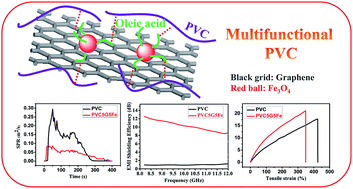Flammability properties and electromagnetic interference shielding of PVC/graphene composites containing Fe3O4 nanoparticles
Abstract
The effects of combined graphene/Fe3O4 nanoparticles on the flame retardancy and smoke suppression of PVC were studied. The dispersion state of graphene in the PVC matrix was improved with the help of Fe3O4 nanoparticles. As a result, the peak values of heat release rate and smoke production rate measured by cone calorimetry were obviously decreased in the PVC/graphene/Fe3O4 composites. According to the results from TGA tests and structural characterization of residual char, the improved flame retardancy was partially attributed to the formation of a network-like structure due to the good dispersion state of graphene in the PVC matrix, and partially to the carbonization of degradation products of PVC catalyzed by Fe3O4 nanoparticles. In addition, ternary PVC composites showed higher mechanical properties than pure PVC. More importantly, the resulting material possessed both electrical and magnetic properties. As a result, the ternary composites showed favorable electromagnetic shielding efficiency in the X-band frequency region (8–12 GHz), due to the formation of conducting interconnected graphene-based networks in the insulating PVC matrix and the magnetic properties.


 Please wait while we load your content...
Please wait while we load your content...